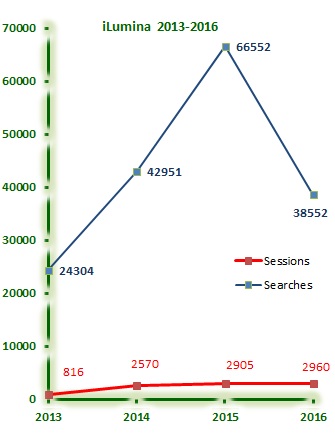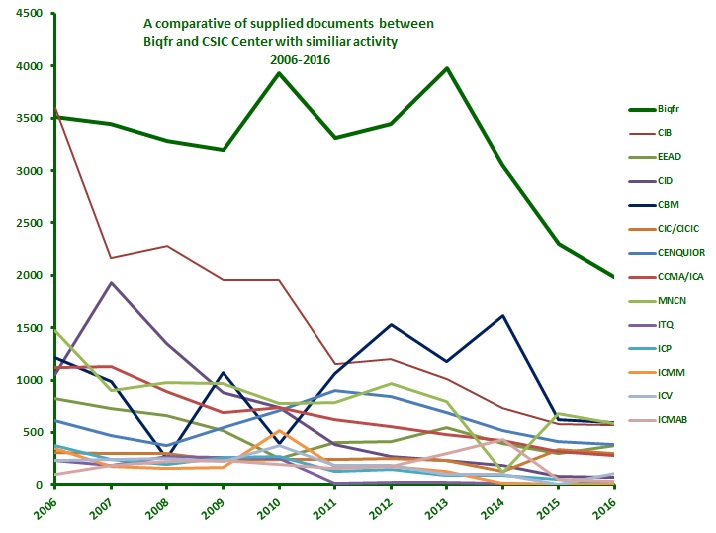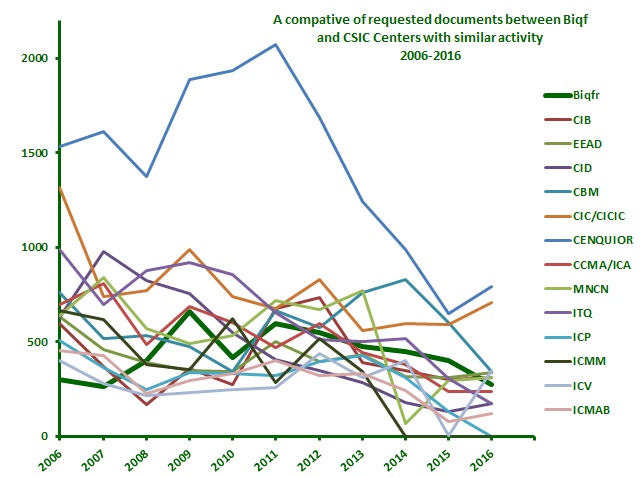| |
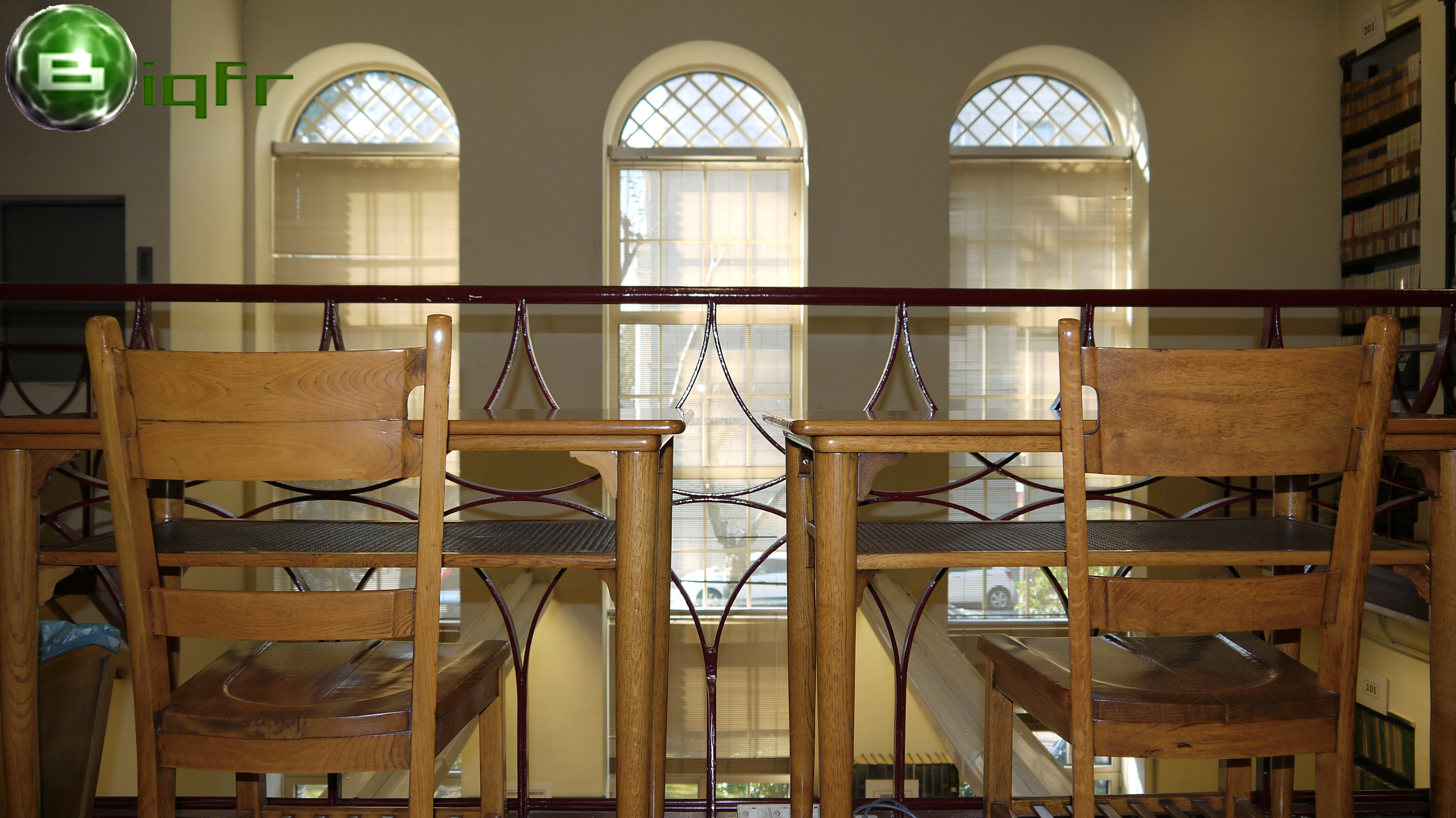
STAFF
Library Manager
Esperanza Iglesias Fernández
Technicians:
Victoria Garrido Martínez
Mª Felipa Arroyo Villa (until/Nov/2018)
Assistant:
Santiago del Olmo Rodríguez (until 23/05/2016)
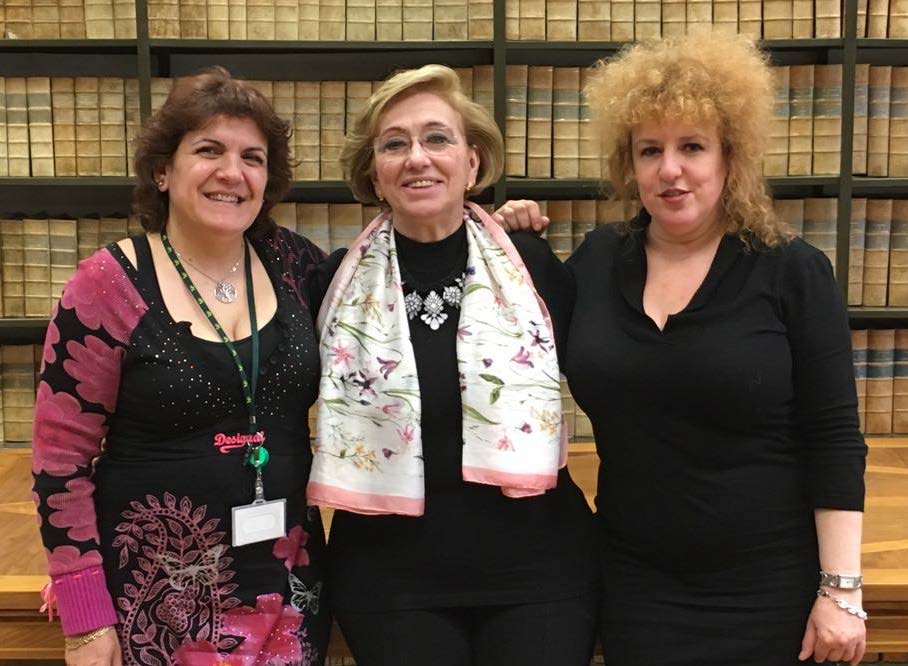
STRATEGIC GOALS
- New technologies
- Visibility and Dissemination: The Blog & Social Networks
- Access to knowledge
- The Historic Documents Collection of the Institute of Physical Chemitry “Rocasolano” and the Julio Palacios Chair (CSIC)
- Document Supply: Interlibrary Loan (ILL)
- Economic implication
- Standard management.
 New technologies New technologies
Since the beginning of technological age, in the 90s, the  has been aware that the technological changes, that were happening so quickly, provide an opportunity to the library to link it to the concept value. In recent years, this concept has been the mainstay of technical work to ensure that the library is competitive, proactive and even co-creative. By knowing the researcher’s perception of the library in relation to the alternatives offered by its competitors (eg. Google), the has been aware that the technological changes, that were happening so quickly, provide an opportunity to the library to link it to the concept value. In recent years, this concept has been the mainstay of technical work to ensure that the library is competitive, proactive and even co-creative. By knowing the researcher’s perception of the library in relation to the alternatives offered by its competitors (eg. Google), the  has developed links with scientists, to help researchers achieve their goals. Because of this, the has developed links with scientists, to help researchers achieve their goals. Because of this, the  has an edge on its competitors. has an edge on its competitors.
Let's put it on a timeline!

 Visibility and Dissemination: The Blog & Social Networks Visibility and Dissemination: The Blog & Social Networks
The Blog is the key tool for  dissemination and visibility. The Blog posts news from all areas of science and innovation. Always with the same purpose: trying to democratize "Science" and bring it to the public in a fun and an entertaining way. The interest of our blog's followers remains dissemination and visibility. The Blog posts news from all areas of science and innovation. Always with the same purpose: trying to democratize "Science" and bring it to the public in a fun and an entertaining way. The interest of our blog's followers remains
In 2015, due to lack of human resources, only 50 news items were posted on the blog. In addition, in 2016 the activity was resumed, publishing 143 news items. During this biennium, we achieved 46,390 visits to reach a total of 1,578,037 visits. The activity of our followers on the social networks Twitter and Facebook is constant and stable, as is the case with the Blog.
The  Blog is not only considered a scientific dissemination source in America (Mexico, Colombia, United States and Argentina, Peru, Chile) and Germany, but we have also detected that it begins to attract followers from other European countries (Russia). Blog is not only considered a scientific dissemination source in America (Mexico, Colombia, United States and Argentina, Peru, Chile) and Germany, but we have also detected that it begins to attract followers from other European countries (Russia).
 Access to knowledge: iLumina Access to knowledge: iLumina
iLumina is a smart tool to accelerate the search for scientific information, providing a competitive advantage to  over Google, while saving the user time and mouse clicks. All specialized databases in the fields of Chemistry, Physics and Biomedicine, to which users of the over Google, while saving the user time and mouse clicks. All specialized databases in the fields of Chemistry, Physics and Biomedicine, to which users of the  have access, are brought together. Through a single search box, with one-click access to PDF or HTML, the user can access full-text content directly through the detailed record or from the result list preview pane. The "A to Z" resource manager, can be utilized through the iLumina system, where it is now incorporated. So that “iLumina” was a single entry point to access to scientific information. have access, are brought together. Through a single search box, with one-click access to PDF or HTML, the user can access full-text content directly through the detailed record or from the result list preview pane. The "A to Z" resource manager, can be utilized through the iLumina system, where it is now incorporated. So that “iLumina” was a single entry point to access to scientific information.
During 2015-2016, we were still customizing Ilumina. Observing the results of the statistics, we find that many searches have been made with few queries, in addition, the returned results were analyzed carefully by consulting the abstracts and then the most relevant and applicable search results were downloaded.
|
Years
|
Sessions
|
Searches
|
Abstracts
|
Downloads
|
|
2015
|
2.905
|
66.552
|
1.491
|
948
|
|
2016
|
2.960
|
38.136
|
772
|
597
|
In 2016, the online holds managed through iLumina were 73,853 journals & books, compared to 30,654 resources in 2014. The  current subscriptions are available online. current subscriptions are available online.
iLumina is available from the CSIC's site to the whole Institution, and ubiquitously through the VPN to  users. Technology for mobile devices is offered. users. Technology for mobile devices is offered.
 The Historic Documents Collection: The Historic Documents Collection:
- Historic Documentation of the Institute of Physical Chemistry “Rocasolano”
This Institute was created in 1946 and, at that time, the  took responsibility for preserving the unique scientific documental legacy that was formerly assembled and curated by the Instituto Nacional de Física y Química, a research facility implemented in 1932 by the Junta para la Ampliación de Estudios (JAE). Although this legacy mainly consisted in a collection of Physics and Chemistry books and journals, there was also a large number of written documents, memories, photographs and even films which are of great historical interest. To better preserve and popularize this part of the took responsibility for preserving the unique scientific documental legacy that was formerly assembled and curated by the Instituto Nacional de Física y Química, a research facility implemented in 1932 by the Junta para la Ampliación de Estudios (JAE). Although this legacy mainly consisted in a collection of Physics and Chemistry books and journals, there was also a large number of written documents, memories, photographs and even films which are of great historical interest. To better preserve and popularize this part of the  funds the Library opened a new section at the web page of the Institute, named Colección de Documentación Histórica del IQFR, in which the digitized version of these written and graphic documents of historic interest would be made easily available to the interested reader. funds the Library opened a new section at the web page of the Institute, named Colección de Documentación Histórica del IQFR, in which the digitized version of these written and graphic documents of historic interest would be made easily available to the interested reader.
- Historic Documentation of the Julio Palacios Chair (CSIC)
In 2015 the CSIC funded the Julio Palacios Chair, from an initiative of Dr. J.M. Oliva of this Institute, with the specific purpose of contributing to the general knowledge of the life and works of the Spanish scientist Prof. Julio Palacios Martínez (1891-1970). A large fraction of the research activity of Prof. Palacios on different fields of Physics and Mathematics was carried out at the Instituto Nacional de Física y Química (JAE). The  actively collaborated with this project in different ways from its inception. On one side the actively collaborated with this project in different ways from its inception. On one side the  carried out an extensive compilation of scientific and historic documents relevant to the aims of the Chair. This search was performed in close connection with Prof. Palacios family, which provided a large number of very interesting manuscripts, press articles, photographs, etc. In addition, the carried out an extensive compilation of scientific and historic documents relevant to the aims of the Chair. This search was performed in close connection with Prof. Palacios family, which provided a large number of very interesting manuscripts, press articles, photographs, etc. In addition, the  designed a section on “Documentación” within the web page associated to Prof. Palacios Chair, www.jpalacios.iqfr.csic.es that contains the digitized results of the compilation mentioned above. Later on, the Library also included within that web page an additional section, named “Galeria”, specifically dedicated to graphic documents. More than 350 items were analyzed and digitized for both sections, that included journal papers, books, biographies, letters, press notes, etc. designed a section on “Documentación” within the web page associated to Prof. Palacios Chair, www.jpalacios.iqfr.csic.es that contains the digitized results of the compilation mentioned above. Later on, the Library also included within that web page an additional section, named “Galeria”, specifically dedicated to graphic documents. More than 350 items were analyzed and digitized for both sections, that included journal papers, books, biographies, letters, press notes, etc.
 Document supply: Interlibrarian loan (ILL) Document supply: Interlibrarian loan (ILL)
The wealth of the  holdings satisfies the needs of its direct users, which is verified by the small number of documents requested to other centers and the significant number documents supplied to external centers such as universities, laboratories, and other CSIC centers. In 2015, as expected from modern science, 98% of document transactions were journal articles and only 2% were book loans. Otherwise, in 2016 these books loan declines to 0.48. Remarkably, the holdings satisfies the needs of its direct users, which is verified by the small number of documents requested to other centers and the significant number documents supplied to external centers such as universities, laboratories, and other CSIC centers. In 2015, as expected from modern science, 98% of document transactions were journal articles and only 2% were book loans. Otherwise, in 2016 these books loan declines to 0.48. Remarkably, the  supplied 7% of all the shared journal articles within the whole CSIC Library Network. supplied 7% of all the shared journal articles within the whole CSIC Library Network.
Over the last 14 years, the average  ratio of the supplied documents to requested documents is nine. That is to say, the ratio of the supplied documents to requested documents is nine. That is to say, the  supplied 9.3 times more documents than we requested from other centers. In the last years, this value decreased to 7, due to the insertion at the Institute of research lines in the areas of "Life Sciences" whose resources are not directly available to our library. In contrast, on the whole, the CSIC Library Network is slightly beneficiary as it shares 1.2 documents for every document that it requests supplied 9.3 times more documents than we requested from other centers. In the last years, this value decreased to 7, due to the insertion at the Institute of research lines in the areas of "Life Sciences" whose resources are not directly available to our library. In contrast, on the whole, the CSIC Library Network is slightly beneficiary as it shares 1.2 documents for every document that it requests
Over the last years, the flow of internal transactions among CSIC libraries has dropped, due to the advance of new technologies and the collective contracting by CSIC of the large packages of electronic resources, provided by the main publishers and other Institutions. 2001-2003 decreased 35%. Furthermore, we should remark that there was a 60% decline between 2006 and 2016. Increasingly, the electronic resources are extended to whole libraries of the Network, reason why the number of transactions decreased, and in their majority belong to the collection in print.
Nevertheless the number of documents supplied to CSIC and other institutions, has decreased with fluctuations.The level of total transactions decreased by 0.3 % in 2013, on the other hand, it decreased in 2014 by 12.8%. However, in 2015 the number of documents supplied to the CSIC centers fell a further 41.3%, which could be reasonably explained by a putative decrease of the CSIC's scientific activity and the closing of libraries at some CSIC centers.
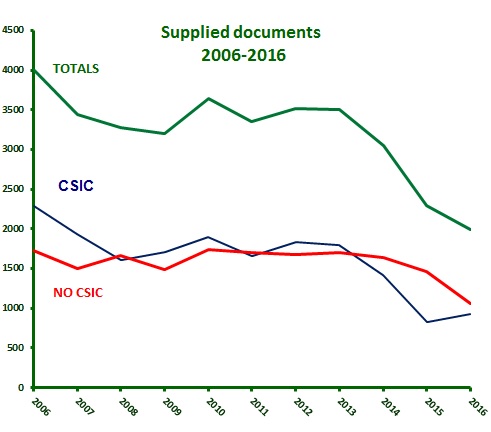 |
 |
During 2015, the total number of document transactions was 2,698 (both supplied and requested.) Of these, 2.299 documents were delivered (-24.73 % lower than 2014) with 833 being sent to the CSIC’s library Network (-41.3% lower than 2014) and 1,466 to other institutions (1.6% higher than 2014). Regarding our requests, 399 documents (-11.3% lower than 2014); were obtained from other libraries, of which 187 (-25.4% lower than 2014) came from CSIC's network and 121 documents (6.5 higher than 2014) were sent by other institutions. 11% documents requested from other libraries were supplied by Subito. Of these 2,698 documents supplied, 2,646 came from journal articles and 52 were book loans.
During 2016, total number of items loaned or borrowed was 2,263, of which 1,989 documents were delivered (-13.5 % lower than 2015) with 925 being supplied to CSIC’s library Network (11% higher than 2015) and 1,064 to other institutions (-27.4% lower than 2015). On the other hand, 274 documents (-12.3% lower than 2015) were requested from other libraries, of which 110 (-41.17% lower than 2015) came from CSIC's network and 164 (-22.6 % lower than 2015) were sent by other institutions, with 11.3 % of these documents coming from Surbiton. Of these 2,263 documents supplied, 2,263 came from journal articles, while 11 were book loans.
The number of book loaned to users was 35 in 2015 and 25 in 2016. It showed a decrease of 18.9% compared with 2013-2014.
 Economic implications Economic implications
Our staff has been reduced by one third with one technician retiring and a second on extended leave. The remainder of the staff has been forced to fill gaps while maintaining its activity. In many cases this has been a difficult and arduous task, surpassed only by the goodwill and enthusiasm its members. The situation is further aggravated if you consider that staff is aging and further retirements are planned. This situation can not be extended for much more time without risking a possible closing of the library.
In 2010  had a book acquisition budget of 46.430 €. Afterwards, a centralized office, the URICI (Unit of Information Resources for Research) was placed in charge of the acquisition of books for the libraries of the network, and had a book acquisition budget of 46.430 €. Afterwards, a centralized office, the URICI (Unit of Information Resources for Research) was placed in charge of the acquisition of books for the libraries of the network, and  has been uninvolved in the selection of books. Furthermore, since 2012 no funds have been allocated acquire new books or journal subscriptions. So, unfortunately, since 2013 no new books related to the has been uninvolved in the selection of books. Furthermore, since 2012 no funds have been allocated acquire new books or journal subscriptions. So, unfortunately, since 2013 no new books related to the  activity have been incorporated. activity have been incorporated.
Furthermore, most journals are no longer subscribed to in paper, but only in the electronic format. Hence many are unavailable in the print edition, as is the case for the International Journal of Chemical Kinetics, Chemistry Letters, Russian Chemical Reviews (devoted to reviews, this is the English version of the legendary Uspekhi Khimii, the flagship of Russian Chemistry) etc. In 2013, due to economic cuts, many electronic resources were not subscribed to by the CSIC Library Network. In 2014 some subscriptions were renovated but all. This change represents an impoverishment of our cultural heritage, because some publishers (IOP, Wiley, Springer, etc.) cut electronic access when the subscription is dropped, even to the years that the journals were purchased in paper.
Currently only 44 journals are subscribed to in print, compared with 169 journals in 2012.
 Standard management Standard management
The  has continued the work of technical process, collections control, organization of the holding and signaling, maintaining the reading room service, etc. has continued the work of technical process, collections control, organization of the holding and signaling, maintaining the reading room service, etc.
- Special Activity: The
 have been involved in the exhibitions “La Internalización de la Cultura Española” organized by the Students’ Residence from March 9th to May 20th 2015, with several holdings. have been involved in the exhibitions “La Internalización de la Cultura Española” organized by the Students’ Residence from March 9th to May 20th 2015, with several holdings.
- The Organization of Courses and Events
|
Organizer
|
Type
|
Title
|
Date
|
Place
|
|

|
Workshops
|
Presentation of ilumina
|
10/27/2016
|
IQFR
|
|
|



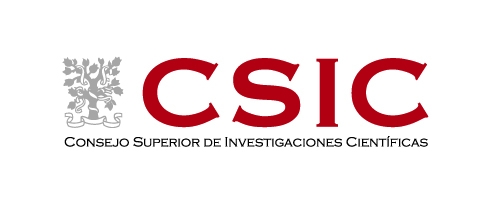





 has been aware that the technological changes, that were happening so quickly, provide an opportunity to the library to link it to the concept value. In recent years, this concept has been the mainstay of technical work to ensure that the library is competitive, proactive and even co-creative. By knowing the researcher’s perception of the library in relation to the alternatives offered by its competitors (eg. Google), the
has been aware that the technological changes, that were happening so quickly, provide an opportunity to the library to link it to the concept value. In recent years, this concept has been the mainstay of technical work to ensure that the library is competitive, proactive and even co-creative. By knowing the researcher’s perception of the library in relation to the alternatives offered by its competitors (eg. Google), the 

